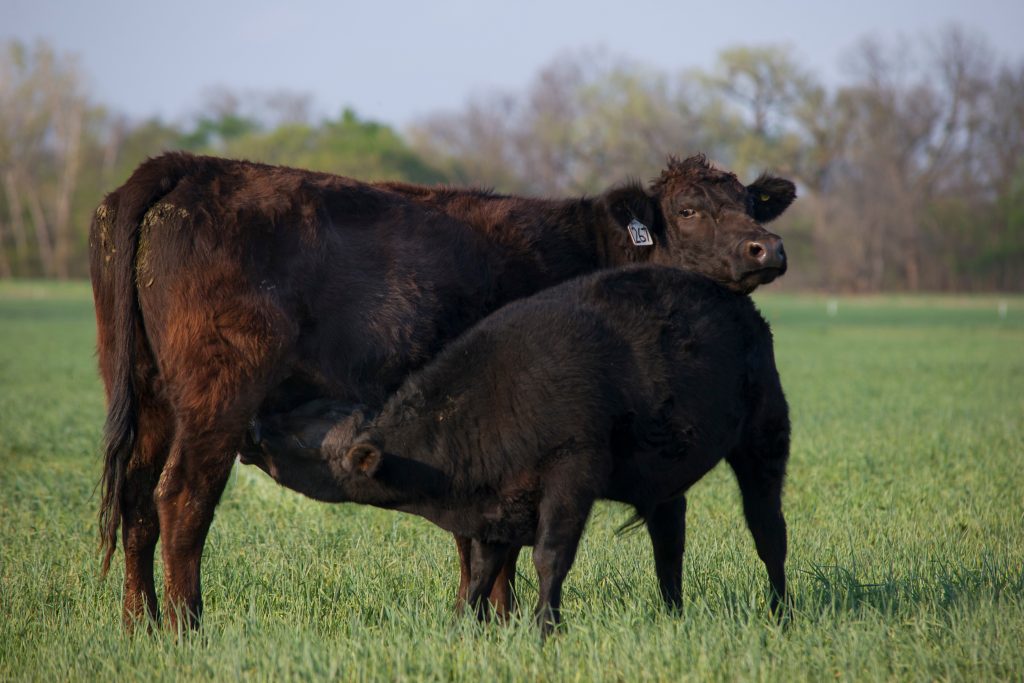
Weekly, Oklahoma State University Extension Beef Cattle Nutrition Specialist Paul Beck offers his expertise on the beef cattle industry. This is a part of the weekly series known as the “Cow-Calf Corner.” Today, he talks about weaning strategies.
Weaning is a stressful time for calves. There are social stresses associated with removal from the dam and disrupting social hierarchy, physical stresses of transportation and the marketing system, and nutritional stresses of changing feed and water sources. Preconditioning on farm will take care of several of these stressors, but there is still considerable stress in normal weaning programs. There is a lot of interest in finding the best way to wean calves. Most commonly the options are:
1) Abrupt weaning – which is stressful and completely changes the calf’s environment, diet and social norms.
2) Nursing prevention tools – which prevent suckling but maintain contact with the dam.
3) Short term separation – removal from the dam to acclimate calves to weaning pens, feed, and water sources before complete weaning.
4) Fenceline weaning – placing cows and calves in adjacent pastures for 7 days allowing contact but preventing suckling.
Researchers from the OSU College of Veterinary Medicine compared these methods and found that for the 2 weeks before weaning calves fitted with a nose flap had reduced gains and weaning weight. During the 28-day preconditioning period calves that had fenceline access to dams and calves that had short term (24-hour separation) from dam gained the most, while abrupt weaned and calves fitted with a nose flap pre-weaning gained the least. The performance of calves over the entire duration of the experiment, from 2 weeks pre-weaning to 28 days post-weaning was only 0.85 lb/day for the Abrupt weaned calves, 1.1 lb/day for the calves fitted with the nose flap, 1.3 lbs/day for short-term separation calves, and 1.5 lbs per day for the fenceline weaned calves.
The reduced performance by the calves fitted with the nose flap can be explained by research that the nose flap decreased activities like grazing, walking, ruminating, and playing, while sucking attempts and time spent near the dam increase. Additionally, blood cortisol levels (an indicator or stress) increase when the nose flap is present. Calves in the fenceline weaning system only spent 2 days with the majority of time spent within 15 feet of the fence and time spent near the fence reduced dramatically over the next 3 days. Fenceline weaning was shown to reduce indicators of stress and increase grazing and feeding behaviors during the weaning process. The apparent success of the short-term separation treatment shows the benefits of familiarization of calves to supplements and facilities prior to weaning.
Research from Louisiana showed little carryover of the benefit of fenceline weaning over the entirety of production, but calves preconditioned for only 21 days gained less during finishing and were 54 pounds lighter at harvest than calves preconditioned for 42 days, regardless if fenceline or abrupt weaning were used.
Low stress weaning techniques can pay dividends to producers adding value through a preconditioning program.














